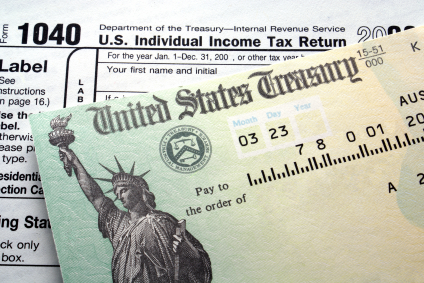According to the Internal Revenue Service, taxpayers received an average refund of $2,913 in 2011, or $319 billion in total. This tax refund plus the additional tax relief programs instituted last year is by no means a king’s ransom, but it’s enough to consider some basic financial planning steps to help save for retirement or to help bring your personal debt down.
The California Society of CPA’s offer Champagne Living readers 8 tips for using your tax refund; last-minute tax filing strategies; and tax planning for 2013
1. Check to see if you have additional money due from the IRS
The average undelivered refund from the IRS was for approximately $2,913. If you’re not sure you received your refund, double-check. That money would go a long way in helping with your bills or in kick-starting that emergency fund you’ve been promising to set up. You can go online to irs.gov and use the “Where’s My Refund?” feature.
2. Fund your IRA or Roth IRA
IRAs, like employer-sponsored retirement plans, feature tax deferral of earnings. If you are eligible, traditional IRAs may enable you to lower your current taxable income through deductible contributions. Withdrawals, however, are taxable as ordinary income (unless you’ve made nondeductible contributions, in which case a portion of the withdrawals will not be taxable).
Roth IRAs don’t permit tax-deductible contributions but allow you to make completely tax-free withdrawals under certain conditions. With both types, you can typically choose from a wide range of investments to fund your IRA.
3. Fund a 529
Socking money away for a child’s college education is one of the harder financial demands of parenthood. But at least in a 529 you may get a tax deduction for your efforts. Some states offer an income tax deduction to residents for contributions they make to a 529 plan. To see if yours does, visit SavingForCollege.com.
4. Open a CD
If you’re going to need money – say, for a down payment on a home or car – in the next year-and-a-half or two, you might opt to put your refund in a 1-year CD. Remember that you don’t need to just stick with your own bank for one of these, either. There’s a lot of competition for your money from banks across the country and from Internet-based banks which are FDIC-insured.
5. Add to your emergency fund
There’s nothing less fun – or harder to save for – than a rainy-day fund worth three months of your expenses to protect you if ever you’re laid off or face a large unexpected expense like a broken down car or furnace.
The best place to house your emergency fund: a high-yield savings account. They’re slightly different than money market accounts in that they typically don’t offer check-writing capabilities, but they also don’t limit your number of transactions as money market accounts can.
6. Reduce your credit card debt
If you’re carrying high-rate debt – defined as a rate higher than any rate you’re getting on your savings accounts – reducing or eliminating your balance sooner rather than later can save you a bundle long-term.
7. Consider insurance coverage
You should carefully choose among the insurance coverage choices available. If you are solely responsible for your medical costs, be sure you have sufficient funds to cover a deductible in the event of a medical emergency.
Working couples with insurance coverage from two employers have another set of choices to consider. Depending on the benefits and premium costs for each plan, the best option may be for one spouse’s plan to cover both of you, for each to have separate coverage, or to maintain duplicate coverage for both. Carefully examine each scenario to determine what is best for your family.
8. Do additional research.
Check out the California Society of CPAs’ free Web site on personal finance topics. This Web site can be accessed at: www.calcpa.org Check out the “Dollar & Sense Program.”
The California Society of CPAs is the nation’s largest professional, non-profit state association representing more than 34,000 CPAs in the area of tax, audit, accounting and consulting services such as personal finance.

